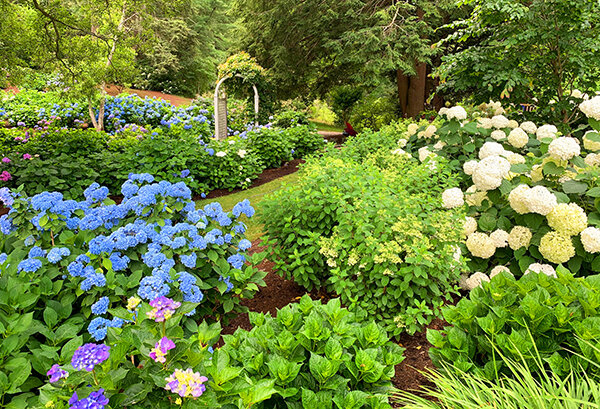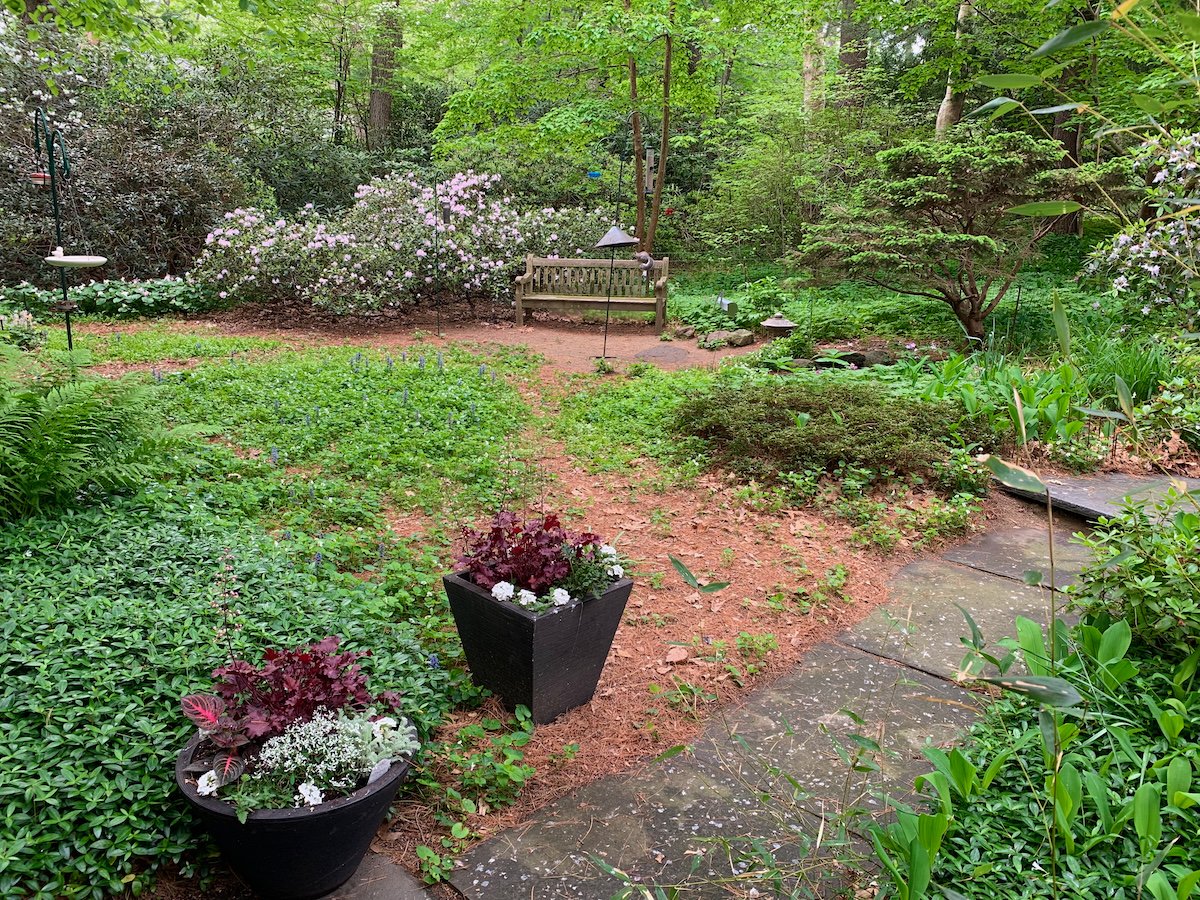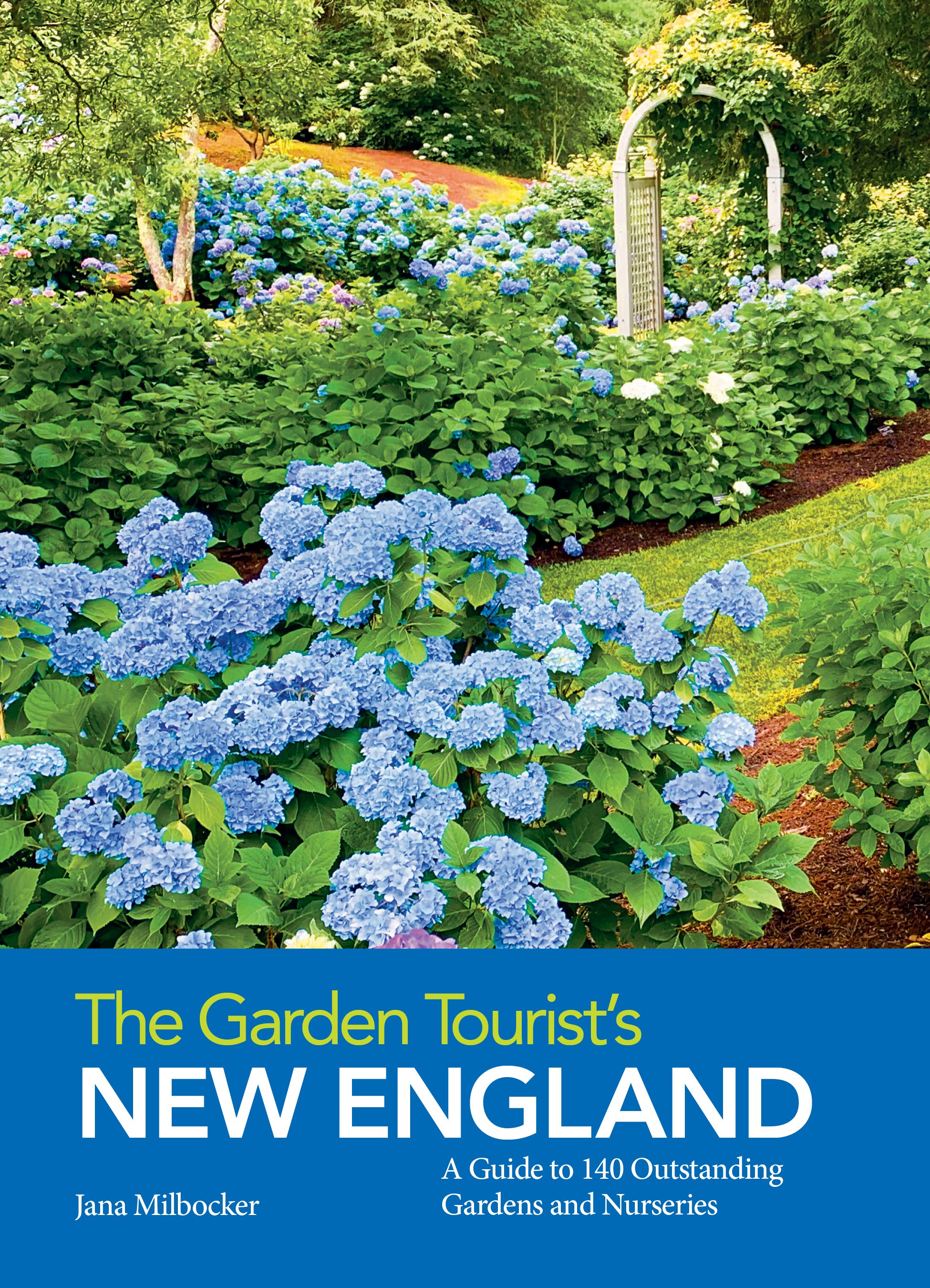The Clark Garden: Working With the Land
/By Susan Clark
I have lived for 40 years now on almost two acres that slope down to the Sudbury River. The land is dominated by large white pines, oaks, and hickories, which provide shade to part sun. The soil is pure sand with several inches of topsoil, so it is dry and drains fast. Dry shade is the hardest condition for gardening. Plantings are concentrated on the upper part of the land close to our house. The lower part and the river flood plain are kept mostly wild, full of native ferns, shrubs, and red maples. Lawn and woodland paths tie the various parts together. They provide a meandering loop through cultivated areas, sun, shade and quite wild sections.
the woodland in early spring. photo by susan clark
This place is a landscape rather than a garden in the formal sense. I have always tried to work with the land and its native flora, rather than bend it to my will. I subscribe to what I now know to call ecological horticulture: organic gardening that considers its ecological impact on wildlife habitats, biodiversity, and ecosystem health. I still have many non-natives and keep acquiring more, but I work to keep a balance even as I indulge in my various horticultural obsessions and impulse plant purchases.
woodland garden by susan clark
A few years back I had over 180 rhododendrons and azaleas and 40 different hostas. Storm damage of wind and snow, catastrophic droughts, and fierce heat and cold spells have weeded out the less hardy or simply unlucky plants. Deer, rabbits, woodchucks, and voles have eaten an endless list of victims, especially hostas and bulbs. My landscape is now a scarred survivor of all of this. I feel fortunate to still have so many plants that delight me through the seasons: 100 rhododendrons, two stewartias, a large Japanese silverbell, several magnolias, a number of witch hazels and their relatives, lots of spring ephemerals, and daffodils. I have a passion for season-extenders with shrubs that bloom right after the winter aconite and snow drops, rhodies that bloom starting in mid-April, summer-blooming azaleas, and a few fall-blooming shrubs.
Susan is a long-time member of the Massachusetts Chapter of the American Rhododendron Society and the North American Rock Garden Society: New England Chapter. Her garden will be open for the Enchanted Gardens Spring Garden Tour in May.

















